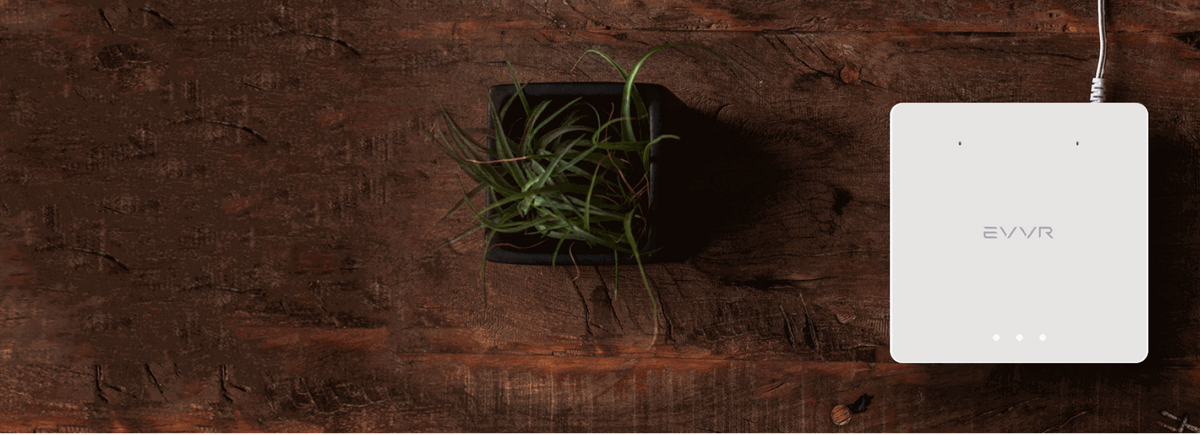Choosing The Right One Controller For Your Smart Home

Table of Contents
Understanding Different Types of Smart Home Controllers
Before diving into specific features, it's crucial to understand the different types of smart home controllers available. Each offers a unique approach to managing your smart devices, and the best choice depends heavily on your individual needs and tech savviness.
Hub-based Controllers (e.g., SmartThings, HomeKit, Google Home)
Hub-based controllers act as central brains for your smart home, connecting and managing various devices through a single app. This provides centralized control, simplifying the management of your smart home ecosystem.
- Examples: SmartThings hub, HomeKit hub (Apple HomePod or Apple TV), Google Home hub. These hubs offer distinct ecosystems, with varying levels of device compatibility.
- Benefits: Single app control for easier management, broader device compatibility compared to decentralized systems, often offering more advanced automation features.
- Drawbacks: Potential vendor lock-in (limiting your choice of devices to those compatible with your chosen hub), reliance on a single point of failure (if the hub malfunctions, your entire system could be affected), and sometimes a steeper learning curve for setting up and utilizing the full potential of the smart home ecosystem. Interoperability challenges can also arise when attempting to integrate devices from different ecosystems.
Decentralized Controllers
Decentralized smart home systems operate differently. Devices often function independently or through their own dedicated apps. While this might seem less streamlined, it has its advantages.
- Examples: Philips Hue smart lighting system, individual smart plugs from various manufacturers.
- Advantages: Easier setup, especially for smaller smart home systems, less reliance on a single point of failure (one malfunctioning device won't bring down the entire system), and potentially more affordable entry point.
- Disadvantages: Lack of centralized control, leading to app clutter (managing multiple apps for different devices), and potentially limited automation capabilities compared to hub-based systems. This approach can become unwieldy as your smart home grows.
Voice Assistants as Controllers
Voice assistants like Amazon Alexa and Google Assistant are increasingly popular as smart home controllers. They offer a hands-free, convenient way to manage your devices.
- Pros: Hands-free control, increased convenience, and often integrate seamlessly with other smart home devices and apps.
- Cons: Reliance on a stable internet connection, potential privacy concerns regarding data collection, and compatibility issues with some devices (not all smart devices are compatible with every voice assistant).
Key Features to Consider When Choosing a Smart Home Controller
Choosing a smart home controller involves more than just picking a brand. Several key features must be considered to ensure seamless integration and a positive user experience.
Device Compatibility
Before purchasing, meticulously check the compatibility list of your chosen smart home controller with your current and planned smart home devices. Not all controllers work with all devices, and integration challenges can arise from various manufacturers' proprietary protocols.
- Importance: A compatible system is crucial for a fully integrated smart home experience. Consider future expansions and choose a controller with broad compatibility to prevent incompatibility issues down the line. Check reviews to determine how well different controllers integrate with your specific smart home devices.
App User Experience
The user interface of the accompanying app is critical. A poorly designed app can negate the benefits of even the most sophisticated smart home controller.
- Ease of use: The app should be intuitive and easy to navigate. Look for clear instructions and helpful tutorials.
- App features: Consider features like scheduling, automation (creating routines), remote access to control your devices from anywhere, and robust reporting dashboards.
- User reviews: Check app store ratings and read user reviews to gauge the overall user experience. Negative reviews often highlight common pain points and potential issues.
Security and Privacy
Security and data privacy are paramount. Ensure your chosen controller employs strong security features to protect your home and personal data.
- Encryption protocols: Look for controllers employing robust encryption protocols (such as AES-256) to secure communication between devices and the controller.
- Two-factor authentication: Two-factor authentication adds an extra layer of security, making it more difficult for unauthorized users to access your smart home system.
- Data encryption: Data at rest and in transit should be encrypted to protect personal information.
- Data usage policies: Review the controller manufacturer's data usage policies to understand how your data is collected and used.
Scalability and Future-Proofing
Your smart home is likely to expand over time. Choose a controller that can handle this growth without significant limitations.
- Expandable systems: Select a controller with the ability to add more devices easily as your needs evolve.
- Cloud service reliability: Consider the reputation and reliability of the cloud service associated with your chosen controller. A reliable cloud service ensures consistent performance and accessibility of your smart home system.
- System updates and future features: Regular software updates are vital for security and introducing new features. Look for a controller with a history of consistent updates and a roadmap for future feature enhancements.
Setting up Your Smart Home Controller: A Step-by-Step Guide
Setting up a smart home controller typically involves connecting it to your home Wi-Fi network, adding your smart devices to the controller’s ecosystem (this process is often referred to as pairing), and configuring settings according to your preferences. Specific setup instructions will vary depending on the brand and model of the smart home controller, and consulting the manufacturer's instructions is crucial for proper setup. Most controllers offer detailed setup guides either in the box or via online resources.
Conclusion
Choosing the right smart home controller is crucial for a seamless and enjoyable smart home experience. By considering the different types of controllers, key features like device compatibility and security, and the setup process, you can find the best fit for your needs and budget. Don't hesitate to compare various smart home controllers and read independent reviews before making a decision. Start building your dream smart home by selecting the perfect smart home controller today!

Featured Posts
-
 Divorce D Eric Antoine Le Bonheur Retrouve Avec Un Nouveau Ne
May 12, 2025
Divorce D Eric Antoine Le Bonheur Retrouve Avec Un Nouveau Ne
May 12, 2025 -
 Future Of The Papacy Potential Successors To Pope Francis
May 12, 2025
Future Of The Papacy Potential Successors To Pope Francis
May 12, 2025 -
 Thomas Mueller Du Bayern Munich Une Reponse Intelligente A Une Question Piegeuse
May 12, 2025
Thomas Mueller Du Bayern Munich Une Reponse Intelligente A Une Question Piegeuse
May 12, 2025 -
 Lowry Contends At Valspar Championship A Detailed Look
May 12, 2025
Lowry Contends At Valspar Championship A Detailed Look
May 12, 2025 -
 The One Controller Revolution Centralized Control For Modern Living
May 12, 2025
The One Controller Revolution Centralized Control For Modern Living
May 12, 2025
